What have we learned from Scotland's Architecture Fringe?
The fifth edition of Scotland’s Architecture Fringe launched this summer, with more happenings to follow later in the year; but with its its inaugural events wrapped up, what have we learned from the festival about our urban environment? We catch up with co-founder and co-director Andy Summers to find out
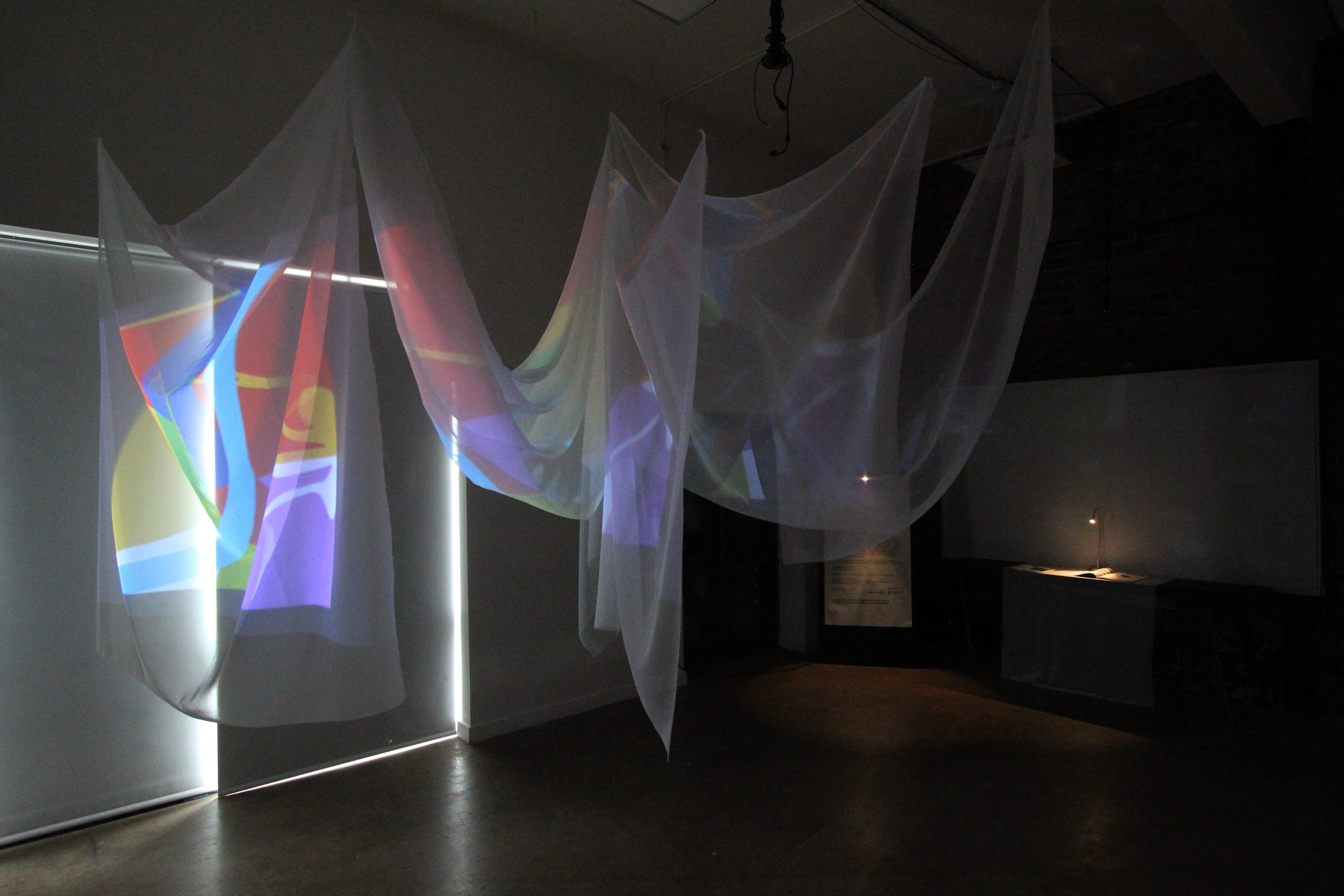
Scotland's Architecture Fringe is a relatively new festival of the urban environment. It started in 2016 and recently launched its fifth edition, having turned from annual to biennial in 2019. With output and international travel restricted by the pandemic, organisers and audience had to adapt, but this did not stop the debate flourishing around big questions concerning the building and design industry, Scottish architecture and beyond. This year's theme, ‘(Un)learning', challenges perceptions and behaviours and promotes a revisiting of architecture's values through open dialogue and architecture activism. With the first set of events now behind us, there's more to come later in the year from the festival's team, in the form of publications and talks. We caught up with co-founder and co-director Andy Summers, to discuss what we've learned so far from this year's Architecture Fringe and what more we can look forward to.
Wallpaper*: What have we learned (or ‘unlearned') from this year’s Architecture Fringe festival?
Andy Summers: The provocation for the Architecture Fringe 2021 is ‘(Un)learning', where we invite everyone to interrogate their own behaviours, beliefs and biases in order to acknowledge how the world really is, to then reimagine how it could be. The provocation is not just hypothetical, and is a means for the organisation and team to also undertake this necessary work. Through this year’s festival we’ve learned two main things. The first is that the work must be intersectional and coalition-building, with lived experience at its heart. People must be supported in this work, too, with appropriate commissioning fees and light-touch creative and organisational frameworks.
The second thing we have learned is that we’re committed to expanding what architecture is beyond the quite narrow, aesthetically led definition that many in the profession cling to and defend. We admit to being seduced by beautiful images of architecture. It’s natural. We get it. We do, however, have to go beyond how things look, to talk about, understand, and take action on how these wonderful pretty pictures actually come into being.
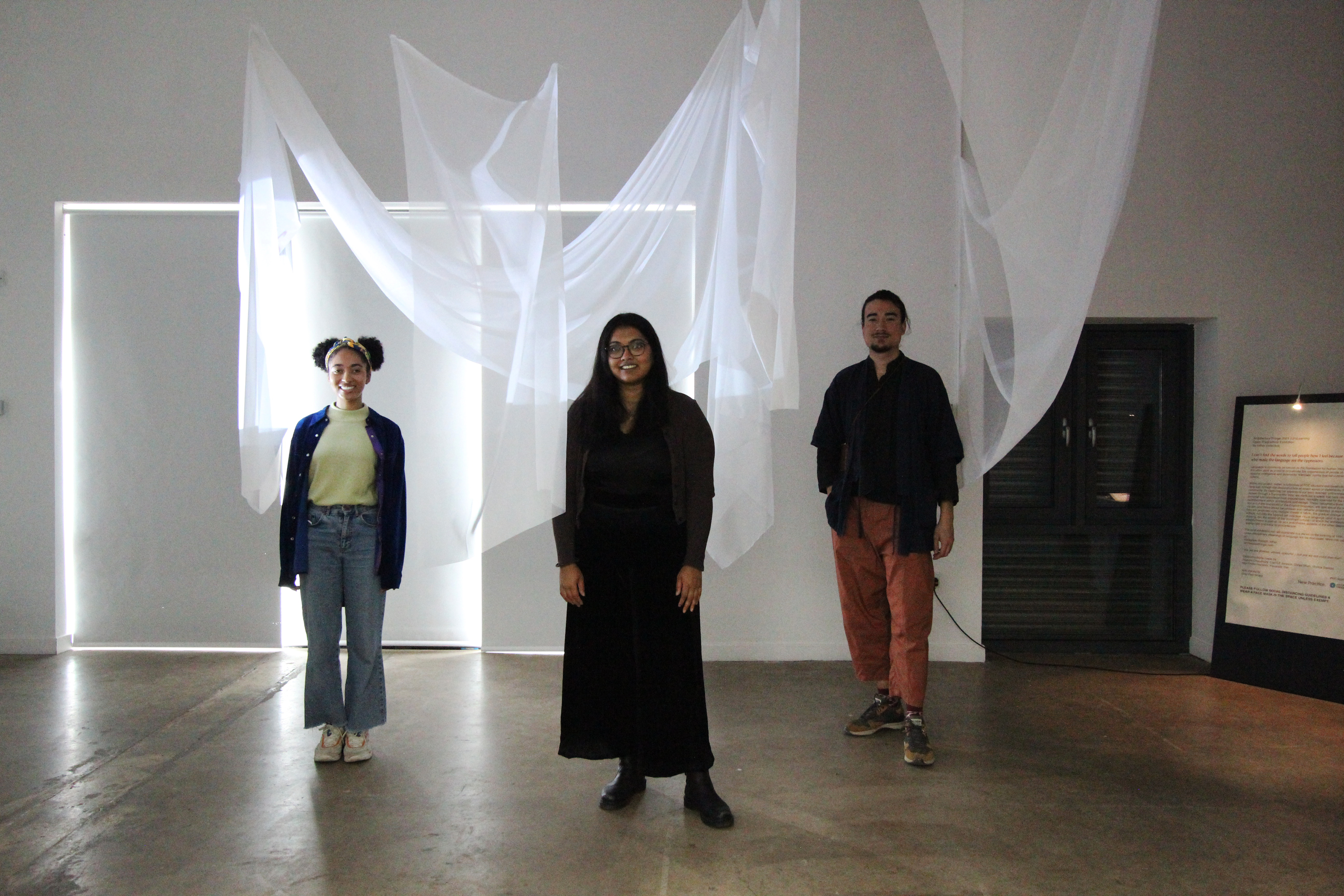
Mia Pinder Hussein, Alyesha Choudhury and Carl Jonsson, of research and design project /other, with 'I can't find the words…' exhibition at Many Studios in Glasgow. Photography: Robb Mcrae
W*: What are the key themes?
AS: The festival has always been quite political in intent, with the open-access structure of it designed to encourage activism and a DIY culture. Space, and a deadline, is offered to test out ideas and new work. Weird things are permitted. In thinking about key themes that unite both visitors and exhibitors, it is encouraging to see that very often throughout the core and open programmes empathy is central to much of the work, with an acknowledgement that people and a society beyond one’s own self exists. There are also recurring themes that are emergent related to equity, representation and self-expression within architecture in Scotland, in specific relation to women, race, and queerness.
W*: Who is the festival for? And how much of the festival is local and influenced by its Scottish roots?
AS: The festival is for anyone with an interest in architecture, our cities, and our landscapes. Since the inaugural edition in 2016 (born as a direct engagement with civil society, from our experience of the Scottish Independence referendum in 2014), we’ve always sought to develop and nurture the architecture scene in Scotland, to expand and pluralise it. We very much feel that we’re part of an ecology here, of people and organisations, from the grassroots to the Scottish government. We’re a national platform rather than one based in a single city, and we enjoy making connections with people across Scotland in both urban and rural areas. But we’re also guided by the work of Scottish sociologist, geographer, educator, and town planner Sir Patrick Geddes. The well-known phrase ‘think global, act local’ is attributed to him, and essentially asks us to foreground our wider context in everything that we do as we actively participate within our more immediate everyday surroundings. It’s what we try and remember to do in the work that we do.
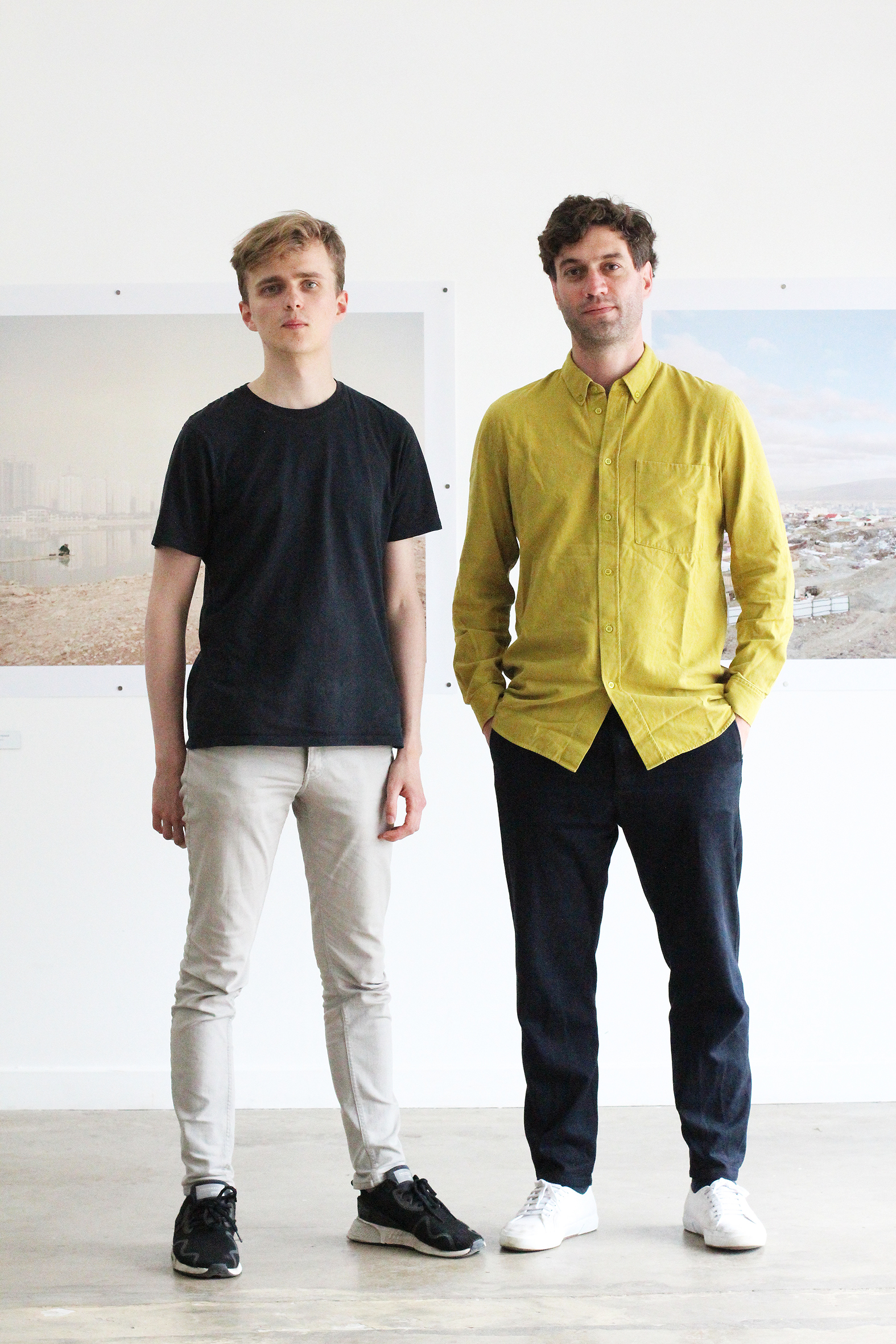
Luke O'Donovan and Francisco Ibáñez Hantke with 'Power Structures' exhibition at Many Studios in Glasgow. Photography: Robb Mcrae
W*: Which were the most popular events, and what does that tell you?
AS: This year on the core programme, the most popular events included our alternative comedy opening event, which featured an array of weird and wonderful characters created by artists Rebecca Davies and Anna Francis. The work they created punctured the often uptight and humourless nature of architecture, with sketches on step aerobics inspired by the planning system, and an advert for Chrome & Glass, a new fragrance by Norman Foster (ahem)… Also popular was our international symposium on architectural education, which featured provocateurs including Dr Harriet Harriss, Dean of the Pratt School of Architecture, Glasgow-based educational agitators Missing in Architecture, and Alisha Morenike Fisher, co-founder of Migrant’s Bureau.
On the open programme, two events that stood out in their popularity were rooted in place. The first, ‘Thurso – “Atomic Town”’, curated by Adam Jay Coleman with Lyth Arts Centre, explored the spatial, economic, and social impact of the now-decommissioned Dounreay nuclear power station on the postwar expansion of the UK’s most northerly mainland town. The second, ‘Security, Rights and Shelter: Unlearning Aberdeen’s Tower Blocks’ curated by Look Again, reflected on the recent listing of eight modernist tower blocks in the city, navigating through the mixed reactions within Aberdeen to the historic recognition. What this told us was that audiences also responded to discussions on specific places – places that were not either Glasgow or Edinburgh, where [what was of] considerable local interest was also of interest to a broader national audience. Narratives and storytelling must expand beyond what is deemed the centre, and that is what the Architecture Fringe is there for.
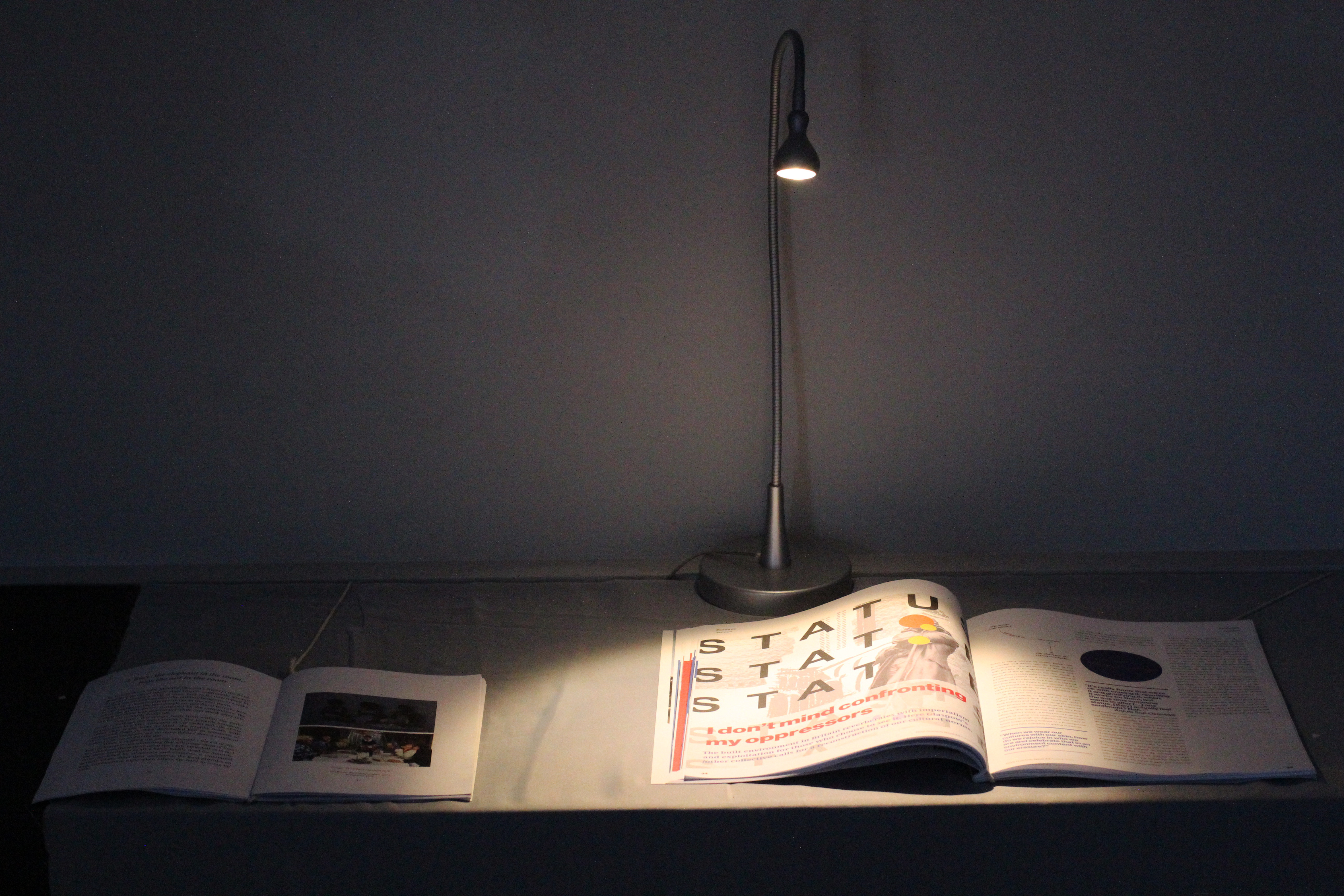
/other: 'I can't find the words…' exhibition at Many Studios in Glasgow. Photography: Robb Mcrae
W*: When will the next Architecture Fringe festival be, and what's your ambition for it?
AS: The next edition of the festival will be in June 2023. Since the inaugural edition in 2016, we’ve always sought to develop and nurture the architecture scene in Scotland, to expand and pluralise it. Our own (un)learning will continue, as we absorb experience, knowledge and wisdom from this year’s festival holistically into our own work. Our ambition is to maintain this line of enquiry, one interconnected between the various editions of the festival and throughout our other work, where we seek to develop and sustain working and creative relationships, to build capacities within the scene here, from year to year.
For the Architecture Fringe 2021, however, there’s still more to come. Later this year we’ll be publishing a series of small books on (un)learning, which draw together the provocations, inputs and outcomes from the various threads of this year’s core programme, such as land, education, practice, whiteness and COP26 [the UN Climate Change Conference of the Parties in Glasgow, autumn 2021). We’re also working on an autumn lecture series, and all our events from this year’s festival are available on our YouTube channel.
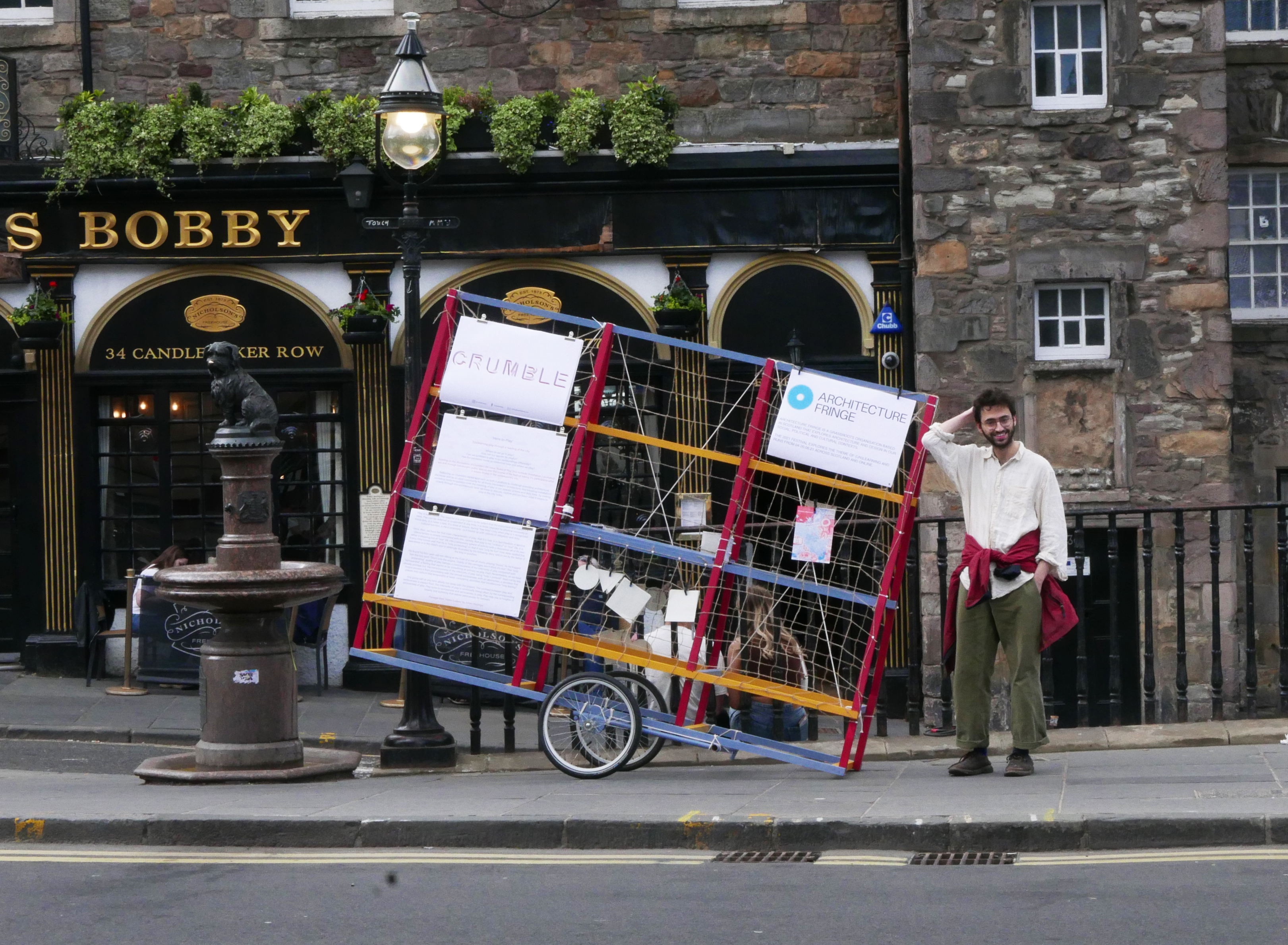
'Here to Play' nomadic installation exploring play by Crumble magazine in Edinburgh. Photography: Crumble Magazine
W*: If you could pose a question to the Architecture Fringe audience to think about until the next edition of the event, what would that be?
AS: Well, the question depends on who you’re asking. Our current audience is a mix of architects and other professionals working within the built environment, but also students, activists, and interested citizens. We’ve always been very interested in expanding the conversation about architecture beyond the usual suspects, to explore it as a source for the wider common good in society. If we posed the question, ‘Who do you need to work with?’, we’d hope this would initiate an immediate awareness of the outer limits of our own abilities and capacities, to reflexively understand that in order to achieve our dreams and ambitions, we need to work with other people, to talk, to develop networks of support, to build coalitions, to give help and to receive help, in order to make things happen.
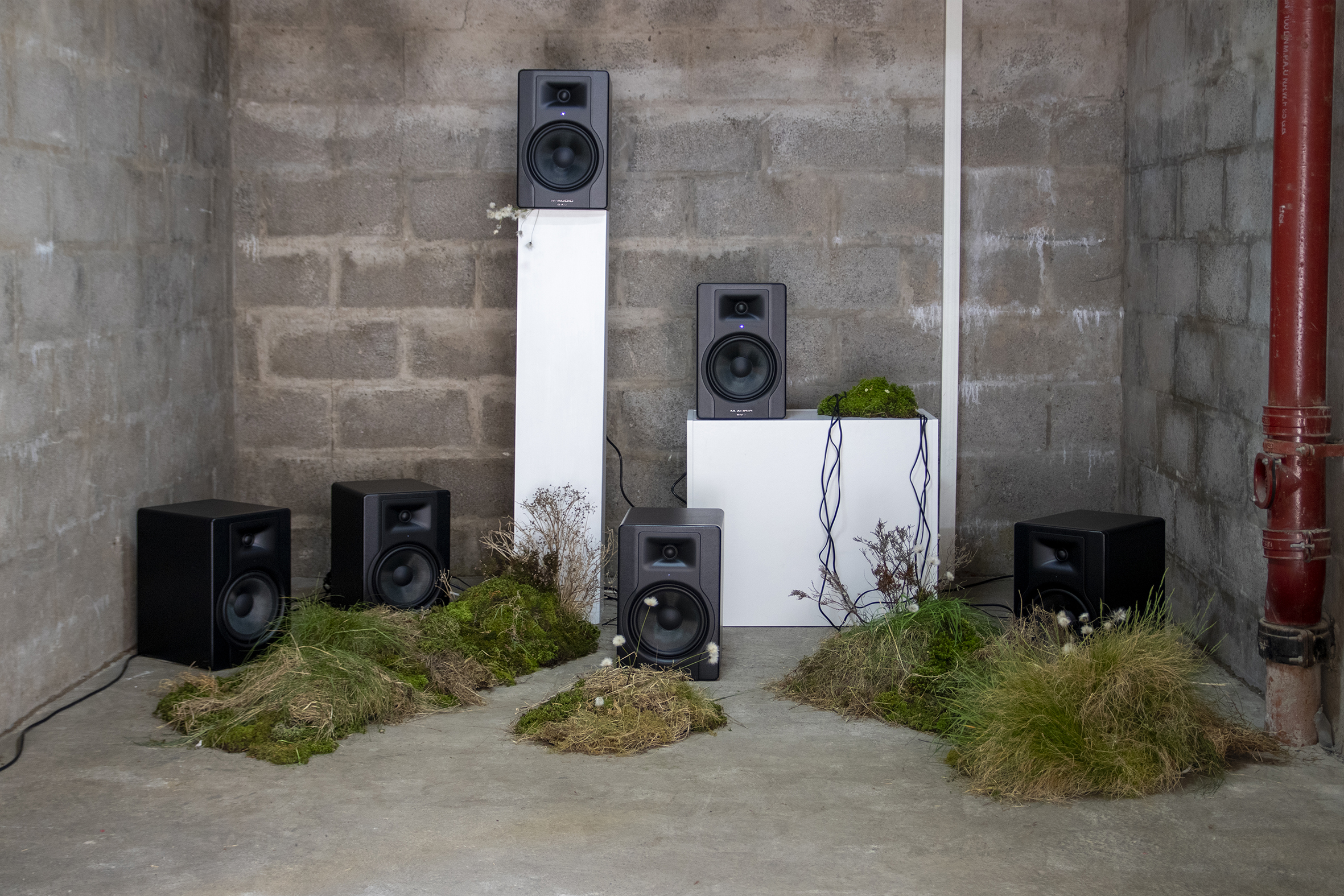
Floi data-driven audio installation exploring government stewardship of Scottish peatlands, by Imposters at Concrete Block Gallery, Edinburgh. Photography: Andrew Brooks
INFORMATION
architecturefringe.com
Wallpaper* Newsletter
Receive our daily digest of inspiration, escapism and design stories from around the world direct to your inbox.
Ellie Stathaki is the Architecture & Environment Director at Wallpaper*. She trained as an architect at the Aristotle University of Thessaloniki in Greece and studied architectural history at the Bartlett in London. Now an established journalist, she has been a member of the Wallpaper* team since 2006, visiting buildings across the globe and interviewing leading architects such as Tadao Ando and Rem Koolhaas. Ellie has also taken part in judging panels, moderated events, curated shows and contributed in books, such as The Contemporary House (Thames & Hudson, 2018), Glenn Sestig Architecture Diary (2020) and House London (2022).
-
 All-In is the Paris-based label making full-force fashion for main character dressing
All-In is the Paris-based label making full-force fashion for main character dressingPart of our monthly Uprising series, Wallpaper* meets Benjamin Barron and Bror August Vestbø of All-In, the LVMH Prize-nominated label which bases its collections on a riotous cast of characters – real and imagined
By Orla Brennan
-
 Maserati joins forces with Giorgetti for a turbo-charged relationship
Maserati joins forces with Giorgetti for a turbo-charged relationshipAnnouncing their marriage during Milan Design Week, the brands unveiled a collection, a car and a long term commitment
By Hugo Macdonald
-
 Through an innovative new training program, Poltrona Frau aims to safeguard Italian craft
Through an innovative new training program, Poltrona Frau aims to safeguard Italian craftThe heritage furniture manufacturer is training a new generation of leather artisans
By Cristina Kiran Piotti
-
 A new London house delights in robust brutalist detailing and diffused light
A new London house delights in robust brutalist detailing and diffused lightLondon's House in a Walled Garden by Henley Halebrown was designed to dovetail in its historic context
By Jonathan Bell
-
 A Sussex beach house boldly reimagines its seaside typology
A Sussex beach house boldly reimagines its seaside typologyA bold and uncompromising Sussex beach house reconfigures the vernacular to maximise coastal views but maintain privacy
By Jonathan Bell
-
 This 19th-century Hampstead house has a raw concrete staircase at its heart
This 19th-century Hampstead house has a raw concrete staircase at its heartThis Hampstead house, designed by Pinzauer and titled Maresfield Gardens, is a London home blending new design and traditional details
By Tianna Williams
-
 An octogenarian’s north London home is bold with utilitarian authenticity
An octogenarian’s north London home is bold with utilitarian authenticityWoodbury residence is a north London home by Of Architecture, inspired by 20th-century design and rooted in functionality
By Tianna Williams
-
 What is DeafSpace and how can it enhance architecture for everyone?
What is DeafSpace and how can it enhance architecture for everyone?DeafSpace learnings can help create profoundly sense-centric architecture; why shouldn't groundbreaking designs also be inclusive?
By Teshome Douglas-Campbell
-
 The dream of the flat-pack home continues with this elegant modular cabin design from Koto
The dream of the flat-pack home continues with this elegant modular cabin design from KotoThe Niwa modular cabin series by UK-based Koto architects offers a range of elegant retreats, designed for easy installation and a variety of uses
By Jonathan Bell
-
 Are Derwent London's new lounges the future of workspace?
Are Derwent London's new lounges the future of workspace?Property developer Derwent London’s new lounges – created for tenants of its offices – work harder to promote community and connection for their users
By Emily Wright
-
 Showing off its gargoyles and curves, The Gradel Quadrangles opens in Oxford
Showing off its gargoyles and curves, The Gradel Quadrangles opens in OxfordThe Gradel Quadrangles, designed by David Kohn Architects, brings a touch of playfulness to Oxford through a modern interpretation of historical architecture
By Shawn Adams